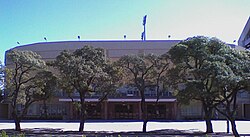#

- 2 Percenters
- Aggies who choose not to participate in Texas A&M traditions. [4] [5] [6] [7] [8]
- 12th Man
- The student section in athletics events. As 11 men play on the football team, the 12th man represents the support off the field and a willingness to serve. During home football games, the student section stands the entire game to embody that spirit. [4] [5] [9] [10] [11] [12]













